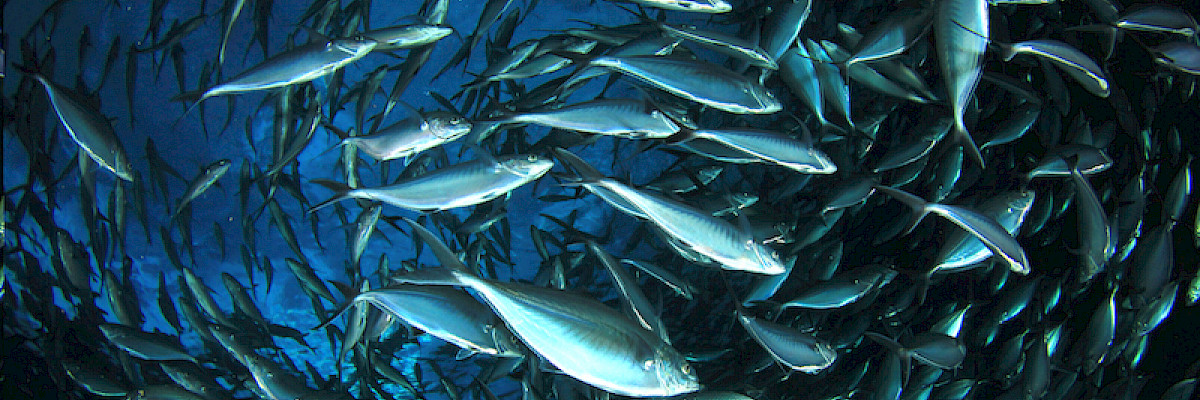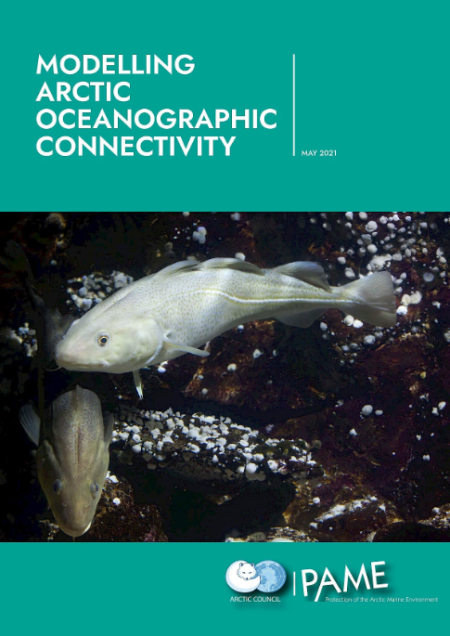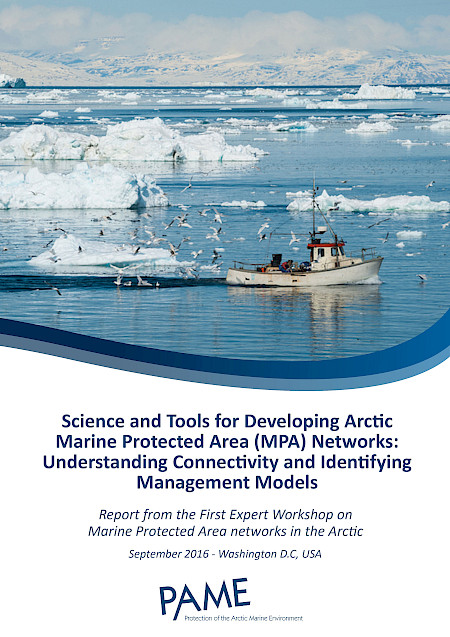
Science and Tools
-
MPA Toolbox (and links)
-
Other docs
-
Modeling Arctic Oceanographic Connectivity
-
2022 Status and Trends Report
-
2017 Indicators Report
-
-
Workshop reports:
-
Science and Tools for Developing Arctic Marine Protected Area (MPA) Networks: Understanding Connectivity and Identifying Management Models (2016)
-
(add other workshop report here as well)
-
 Modelling Arctic Oceanographic Connectivity
Modelling Arctic Oceanographic Connectivity
Ongoing climate change may facilitate increased access to the Arctic region, and potential new economic opportunities, but may also bring potential threats to the Arctic marine and coastal environments. These changes could benefit from more integrated approaches to Arctic marine management, including the consideration of MPA networks designed to aid in the conservation and sustainable use of the Arctic environment. Understanding seascape connectivity in the Arctic Ocean using oceanographic circulation models is one way to support MPA networks and sustainable use of the Arctic Ocean.
In May 2021, the report on Modelling Arctic Oceanographic Connectivity was appropved at the Arctic Council Ministerial meeting. The report is aimed as a working document and is a contribution PAME’s MPA toolbox by:
- mapping potential connectivity among populations of key marine species in the Arctic region using biophysical modelling to inform the positioning and nature of conservation measures deployed in a network of MPA
- describing dispersal distance within the Arctic Ocean, which may be used to infer the minimum size of Marine Protected Areas (MPAs) for sufficient self-recruitment
- identifying sources and sinks for MPAs and other valuable areas, e.g. fish spawning grounds and juvenile nursery areas
- identifying major barriers to dispersal and gene flow
PAME will build on the Connectivity Report with a follow up project which will include the Central Arctic Ocean.
Science and Tools for Developing Arctic Marine Protected Area (MPA) Networks: Understanding Connectivity and Identifying Management Models
 PAME Workshop, 22-23 September 2016 - Washington DC.
PAME Workshop, 22-23 September 2016 - Washington DC.
The workshop included:
- A discussion on species that highlight the importance of ecological connectivity in the Arctic marine environment, as well as possible approaches and methodologies for mapping selected elements of ecological connectivity for some of those species, and
- A discussion on a draft list of types of area-based conservation measures that benefit different categories of Arctic biodiversity (i.e. the "toolbox").
Workshop objectives:
- Develop our understanding of ecological connectivity for different marine taxa.
- Identify priorities for future scientific or other types of collaboration to enhance understanding of ecological connectivity in the Arctic.
- Based on input provided by Arctic States, share examples of different management tools used to manage categories of marine biodiversity (e.g. habitat, marine taxa).
- Identify priorities for expansion/refinement of “MPA Toolbox” to support Arctic states’ MPA network development.
- Identify potential next steps to advance understanding and management of MPA networks among Arctic Council Working Groups and other partners.
Click here to download the workshop report.
| Name of presentation | Presenter | Download |
| Ecological connectivity --- Overview of techniques that have been used to map larval dispersal and its relevance to MPA design: modelling (optimal size and spacing), direct observation of larval dispersal, genetic measures of connectivity/isolation, considerations of climate change | Mark Carr (University of California, Santa Cruz) | Download |
| Physical connectivity – Issues and possible approaches to mapping physical and habitat connectivity in the Arctic. Overview of dynamics of water masses and ice movement | Pat Halpin and Jesse Cleary (Duke University) | Download |
| Case study – Sweden’s experience mapping larval connectivity for MPA networks | Jon Havenhand (University of Gothenburg) | Download |
| Approaches and considerations for understanding connectivity for marine mammals using various techniques | Howard Rosenbaum (Wildlife Conservation Society) | Download |
| Mapping connectivity for cetaceans in the Alaskan Arctic – CetMap | Janet Clarke (Leidos) | Download |
| Local community engagement in mapping and understanding marine mammal connectivity | Willie Goodwin (Alaska Waterways Safety Commission) | Download |
| Overview of techniques: satellite telemetry, habitat modeling, others?, in the context of Important Bird Areas | Grant Gilchrist (Environment Canada) | Download |
| Identifying Important Bird Areas and seabird connectivity in the Alaskan Arctic | Melanie Smith (Alaska Audubon) | Download |
| Case study: Identifying candidate sites for an MPA network in the Russian Arctic: accounting for connectivity | Irina Onufrenya (WWF Russia) | Download |
| The role of protected areas and other area---based conservation measures for marine conservation | Dan Laffoley (IUCN World Commission on Protected Areas --- Marine) | Download |
| Elements of a representative and ecologically connected MPA network | Mark Carr (University of California, Santa Cruz) | Download |
| Understanding categories of Arctic biodiversity to be addressed by the MPA Toolkit (e.g. habitat, species groups) | Martin Sommerkorn (WWF) | Download |
| Canada’s Approach to Marine Conservation Targets | Bethany Schroeder (Fisheries and Oceans Canada) | Download |
| Arctic biodiversity monitoring: linkages to area---based conservation measures | Tom Christensen (Circumpolar Biodiversity Monitoring Programme) | Download |
| Pikialasorsuaq Commission | Carolina Behe (Inuit Circumpolar Council) | Download |
| Examples of Arctic MPAs and “Other area---based conservation measures” in the marine environment (based on submissions by Arctic States to PAME) | Martin Sommerkorn (WWF) | Download |
| Integration of Indigenous Knowledge and Values in the MPA Toolbox | Willie Goodwin (Alaska Waterways Safety Commission) | Download |
| Towards a toolbox: deploying MPAs and other area---based measures to conserve important categories of Arctic marine biodiversity | Martin Sommerkorn (WWF) | Download |
 Arctic Council Working Group
Arctic Council Working Group